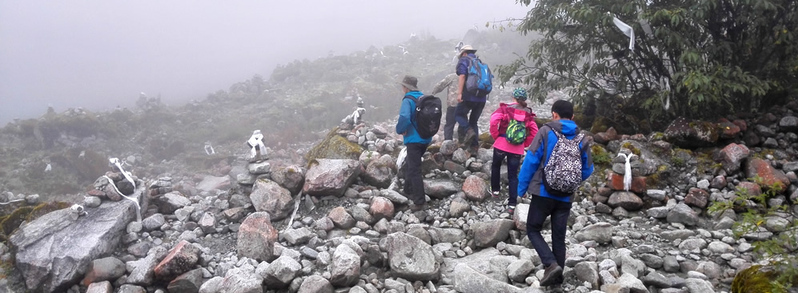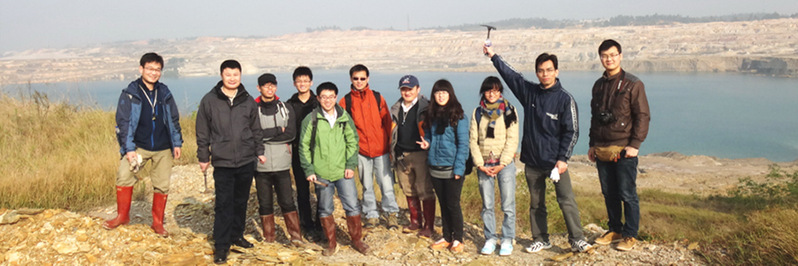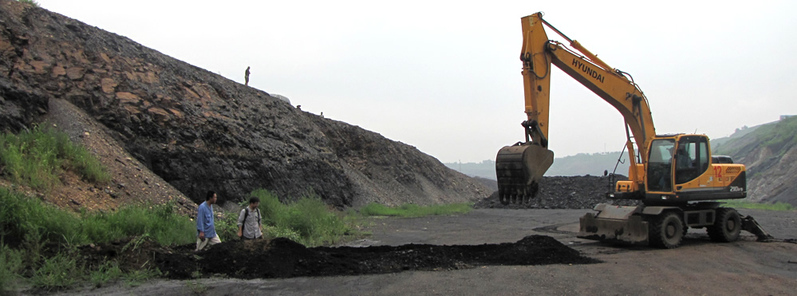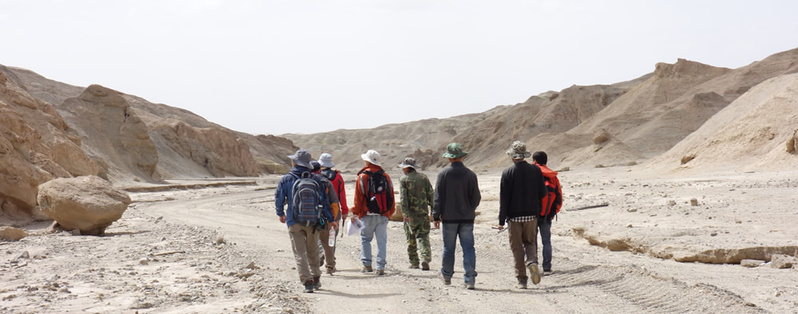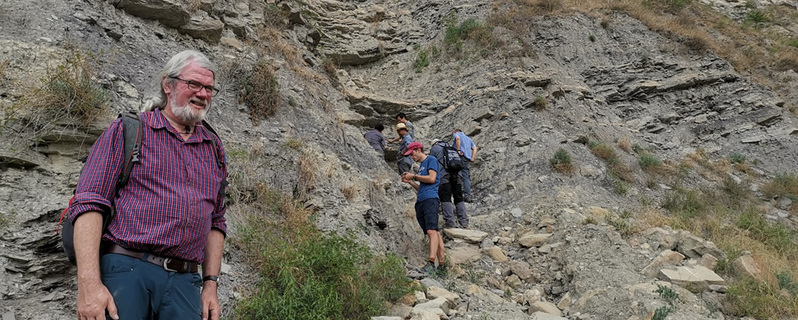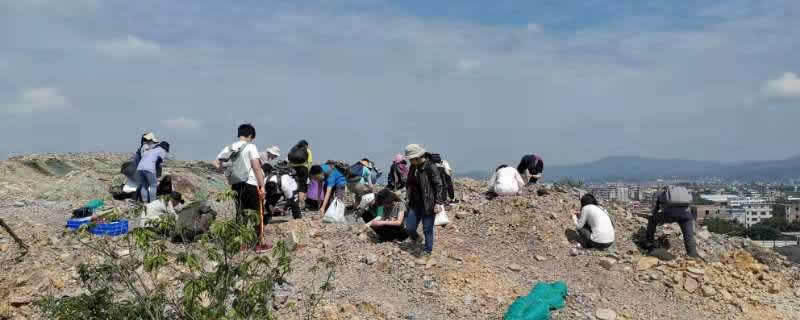个人资料
个人简介从事专业:古生物学与地层学 研究方向:新生代环境变迁与生物响应、古植物生态 目前工作:陆相气候格局及重大转换、古大气CO2与温室效应 社会职务研究领域植物古气候学 欢迎地学、生物学、生态学及相关联学科的同学加入。 野外掠影:
西藏伦坡拉
四川贡嘎山现代植被
甘肃祁连山现代植物采集
辽宁抚顺
青海柴达木
河南灵宝
广西南宁
开授课程古生物学 地层学 古植物学 古气候学 地史时期全球变化与生态响应 科研项目主持的项目
论文作为责任作者的论文 (ResearchGate Profile) Ma Q, Liu YC, Li Q, Quan C, 2025. Early Oligocene Asian monsoon: Evidence from the Fuping flora of Baise, Guangxi, low-latitude China. Palaeogeography Palaeoclimatology Palaeoecology, 662: 112783 Wang C, Liu YC, Maslova N, Jia H, Li Q, Quan C, 2024. Middle to late Miocene cooling and drying in the northern Tibetan Plateau based on evidence from plant-insect interactions. Palaeogeography Palaeoclimatology Palaeoecology, 655: 112496 Li Q, Niu B, Liu YC, Jia H, Li Y, Xu L, Quan C, 2023. Analysis of leaf economics sheds light on the heterophylly and ecological strategies of Paleocene Ginkgo leaves from Henan Province, China. Palaeogeography Palaeoclimatology Palaeoecology, 630: 111816 Song H, Huang L, Xiang H, Quan C, Jin JH, 2023. First reliable Miocene fossil winged fruits record of Engelhardia in Asia through anatomical investigation. iScience, 26: 106867 Liu XY, Song HZ, Wu XK, Hu JR, Huang WY, Quan C, Jin JH, 2023. Late Oligocene fossil acorns and nuts of Quercus section Cyclobalanopsis from the Nanning Basin, Guangxi, South China. Plant Diversity, 45: 434–445 Hu JR, Zhang H, Huang LL, Wu XK, Spicer RA, Quan C, Jin JH, 2023. The first megafossil of Cibotium within its modern distribution. Journal of Palaeogeography, 12: 96–106 Han Z, Jia H, Meng X, Ferguson DK, Luo M, Liu P, Quan C, 2022. A New Clue for the Late Eocene Freshwater Ecosystem of Central China Evidenced by New Fossils of Trapa L. and Hemitrapa Miki (Lythraceae). Biology, 11: 1442 Li Q, Utescher T, Liu YC, Ferguson D, Jia H, Quan C, 2022. Monsoonal climate of East Asia in Eocene times inferred from an analysis of plant functional types. Palaeogeography Palaeoclimatology Palaeoecology, 601: 111138 Luo M, Jia H, Li Q, Meng X, Ferguson DK, Liu P, Han Z, Wang J, Quan C, 2022. Middle Miocene lotus (Nelumbonaceae, Nelumbo) from the Qaidam Basin, Northern Tibet Plateau. Biology, 11: 1261 Liu XY, Manchester SR, Rozefelds AC, Quan C, Jin JH, 2022. First fossil fruits of Elaeocarpus (Elaeocarpaceae) in East Asia: Implications for phytogeography and paleoecology. Journal of Systematics and Evolution, 60: 456–471 Xu SL, Kodrul TM, Maslova NP, Song HZ, Tobias AV, Wu XK, Quan C, Jin JH, 2022. First occurrence of Nyssa endocarps and associated fungi in the Oligocene of South China: palaeogeographical and palaeoecological significance. Papers in Palaeontology, 8: e1408 Li Q, Deng WYD, Wappler T, Utescher T, Maslova N, Liu YC, Jia H, Song CY, Quan C, 2022. High frequency of arthropod herbivore damage in the Miocene Huaitoutala flora from the Qaidam Basin, northern Tibetan Plateau. Review of Palaeobotany and Palynology, 297: 104569 Li YF, Huang LL, Quan C, Jin JH, Oskolski AA, 2021. Fossil wood of Syzygium from the Miocene of Guangxi, South China: the earliest fossil evidence of the genus in eastern Asia. IAWA Journal, 42: 435–441 Huang L, Jin JH, Quan C, Oskolski AA, 2021. New occurrences of Altingiaceae fossil woods from the Miocene and upper Pleistocene of South China with phytogeographic implications. Journal of Palaeogeography, 10: 482–493 Wu X, Zhang H, Kodrul TM, Maslova NP, Jiang S, Yin Q, Quan C, Jin JH, 2021. First fossil Fokienia (Cupressaceae) in South China and its palaeogeographic and palaeoecological implications. Frontiers in Earth Science, 9: 555 Liu WQ, Xu SL, Fu QY, Quan C, Jin JH, 2021. Late Oligocene Melia (Meliaceae) from the Nanning Basin of South China and it’s biogeographical implication. Journal of Palaeogeography, 10: 1–7 Wu XK, Zavialova NE, Kodrul TM, Liu XY, Gordenko NV, Maslova NP, Quan C, Jin JH, 2021. Northern Hemisphere megafossil of Dacrycarpus (Podocarpaceae) from Miocene of South China and its evolutionary and palaeoecological implication. Journal of Systematics and Evolution, 59: 352–374 Quan C, 2020. Numerical Modelling for Next Generation Sedimentology. In Wang CS, Immenhauser A, Ogg J, Mckenzie J, de Boer P, Hu XM, Chen ZQ, Liu ZF, Li C, Shen YA., Chen X, eds. A roadmap of sedimentology in China until 2030: Sedimentology at the crossroad of new frontiers. International Association of Sedimentologists, 92 pp. Huang L, Jin J, Quan C, Oskolski AA, 2020. Mummified Magnoliaceae woods from the upper Oligocene of South China, with biogeography, paleoecology and wood trait evolution implications. Journal of Systematics and Evolution, 58: 89–100 Wu X, Liu X, Kodrul T, Quan C, Jin J, 2019. Dacrycarpus pattern shedding new light on the early floristic exchange between Asia and Australia. National Science Review, 6: 1086–1090 Li Q, Su T, Liu YC, Quan C, 2019. Oligocene plant ecological strategies in low-latitude Asia unraveled by leaf economics. Journal of Asian Earth Sciences, 182: 103933 Li Q, Shi G, Liu Y, Fu Q, Jin J, Quan C, 2019. The early history of Annonaceae (Magnoliales) in Southeast Asia suggests floristic exchange between India and Pan‐Indochina by the late Oligocene. Papers in Palaeontology, 5: 601–612 Han M, Manchester SR, Wu Y, Jin J, Quan C, 2018. Fossil fruits of Canarium (Burseraceae) from Eastern Asia and their implications for phytogeographical history. Journal of Systematic Palaeontology, 16: 841–852 Li Q, Liu Y, Jin J, Quan C, 2018. Late Oligocene Fissistigma (Annonaceae) leaves from Guangxi, low-latitude China and its paleoecological implications. Review of Palaeobotany and Palynology, 259: 39–47 Huang L, Sun J, Jin JH, Quan C, Oskolski AA, 2018. Litseoxylon gen. nov. (Lauraceae): The most ancient fossil angiosperm wood with helical thickenings from southeastern Asia. Review of Palaeobotany and Palynology, 258: 223–233 Huang L, Jin J, Quan C, Oskolski AA, 2018. Mummified fossil woods of Fagaceae from the upper Oligocene of Guangxi, South China. Journal of Asian Earth Sciences, 76: 23–28 Han M, Manchester SR, Fu QY, Jin HJ, Quan C, 2018. Paleogene fossil fruits of Stephania (Menispermaceae) from North America and East Asia. Journal of Systematics and Evolution, 56: 81–91. Liu YC, Quan C, 2017. Late Cenozoic climates of low-latitude East Asia: A paleobotanical example from the Baise Basin of Guangxi, southern China. Palaeoworld, 26: 572–580 Shi XG, Fu QY, Jin JH, Quan C, 2017. Mummified Oligocene fruits of Schima (Theaceae) and their systematic and biogeographic implications. Scientific Reports, 7: 4009 Fu QY, Li L, Jin JH, Liu XY, Quan C, 2017. Mummified fruits of Choerospondias nanningensis sp. nov. (Anacardiaceae) from the upper Oligocene of a low latitude site in East Asia. Journal of Systematics and Evolution, 55: 477–483 Quan C, Fu QY, Shi GL, Liu YS, Li L, Liu XY, Jin JH, 2016. First Oligocene mummified plant Lagerstätte at the low latitudes of East Asia. Science China Earth Sciences, 59: 445–448 Li L, Jin JH, Quan C, Oskolski, 2016. First record of Podocarpoid fossil wood in South China. Scientific Reports, 6: 32294 Huang LL, Jin JH, Quan C, Oskolski AA, 2016. Camellia nanningensis sp. nov.: the earliest fossil wood record of the genus Camellia (Theaceae) from East Asia. Journal of Plant Research, 129: 823–831 Li YX, Jiao WJ, Liu ZH, Jin JH, Wang DH, He YX, Quan C, 2016. Terrestrial responses of low-latitude Asia to the Eocene–Oligocene climate transition revealed by integrated chronostratigraphy. Climate of the Past, 12: 255–272 Huang YJ, Liu YS, Wen J, Quan C, 2015. First fossil record of Staphylea L. (Staphyleaceae) from North America, and its biogeographic implications. Plant Systematics and Evolution, 301: 2203–2218 Quan C, Liu Z, Utescher T, Jin J, Shu J, Li Y, Liu YSC, 2014. Revisiting the Paleogene climate pattern of East Asia: a synthetic review. Earth–Science Reviews, 139: 213–230 Liu Z, Zhang K, Sun Y, Liu W, Liu YSC, Quan C, 2014. Cenozoic environmental changes in the northern Qaidam Basin inferred from n–alkane records. Acta Geologica Sinica–English Edition, 88: 1547–1555 Wu S, Zhang F, Edwards S, Wu W, Ye J, Bi S, Ni X, Quan C, Meng J, Organ C, 2014. The evolution of bipedalism in jerboas (Rodentia: Dipodoidea): origin in humid and forested environments. Evolution, 68: 2108–2118 Quan C, Liu YSC, Tang H, Utescher T, 2014. Miocene shift of European atmospheric circulation from trade wind to westerlies. Scientific Reports, 4: 5660 Su K, Quan C, Liu YSC, 2014. Cycas fushunensis sp. nov. (Cycadaceae) from the Eocene of northeast China. Review of Palaeobotany and Palynology, 204: 43–49 Wang Y, Huang C, Sun B, Quan C, Wu J, Lin Z, 2014. Paleo-CO2 variation trends and the Cretaceous greenhouse climate. Earth–Science Reviews, 129: 136–147 Quan C, Han S, Utescher T, Zhang C, Liu YSC, 2013. Validation of temperature–precipitation based aridity index: paleoclimatic implications. Palaeogeography Palaeoclimatology Palaeoecology, 386: 86–95 Wang D, Lu S, Han S, Sun X, Quan C, 2013. Eocene prevalence of monsoon-like climate over eastern China reflected by hydrological dynamics. Journal of Asian Earth Sciences, 62: 776–787 Quan C, Liu YSC, Utescher T, 2012. Eocene monsoon prevalence over China: a paleobotanical perspective. Palaeogeography Palaeoclimatology Palaeoecology, 365–366: 302–311 Quan C, Liu YSC, Utescher T, 2012. Paleogene temperature gradient, seasonal variation and climate evolution of northeast China. Palaeogeography Palaeoclimatology Palaeoecology, 313–314: 150–161 Zhou ZY, Quan C, Liu YSC, 2012. Tertiary Ginkgo ovulate organs with associated leaves from North Dakota, U.S.A., and their evolutionary significance. International Journal of Plant Sciences, 173: 67–80 Quan C, Liu YSC, Utescher T, 2011. Paleogene evolution of precipitation in northeast China supporting the middle Eocene intensification of the East Asian monsoon. Palaios, 26: 743–753 Wan CB, Wang DH, Zhu ZP, Quan C, 2011. Trend of Santonian (Late Cretaceous) atmospheric CO2 and global mean land surface temperature: Evidence from plant fossils. SCIENCE CHINA Earth Sciences, 54: 1338–1345 全成, 周志炎, 2010. 黑龙江渐新世银杏大化石及其古气候和植物地理意义. 古生物学报, 49: 439–442 Quan C, Sun G, Zhou ZY, 2010. A new Tertiary Ginkgo (Ginkgoaceae) from the Wuyun Formation of Jiayin, Heilongjiang, northeastern China and its paleoenvironmental implications. American Journal of Botany, 97: 446–457 Quan C, Sun C, Sun Y, Sun G, 2009. High resolution estimates of paleo-CO2 levels through the Campanian (Late Cretaceous) based on Ginkgo cuticles. Cretaceous Research, 30: 424–428 Quan C, Sun G, 2008. Late Cretaceous aquatic angiosperms from Jiayin of Heilongjiang, Northeast China. Acta Geologica Sinica–English Edition, 82: 1133–1140 全成, 张林, 2005. 黑龙江嘉荫地区古近纪早期古气候分析. 地质论评, 51: 10–15 科技成果荣誉奖励2017,国土资源部杰出青年科技人才 2015,第三届青年古生物学奖 2014,第十四届青年地质科技奖 2014,第二届吉林省青年地质科技奖 2014,Palaeogeography Palaeoclimatology Palaeoecology“10大亮点研究” 2013,国土资源部高层次创新型科技人才工程 工作经历2018– 长安大学,地球科学与资源学院,教授 2013–2017 吉林大学,古生物学与地层学研究中心,教授 2013–2014 East Tennessee State University, Research Associate 2010–2011 East Tennessee State University,访问学者 2009–2012 吉林大学,古生物学与地层学研究中心,副教授 2009–2011 中国科学院南京地质古生物研究所,博士后 2005–2008 吉林大学,古生物学与地层学研究中心,讲师 |



